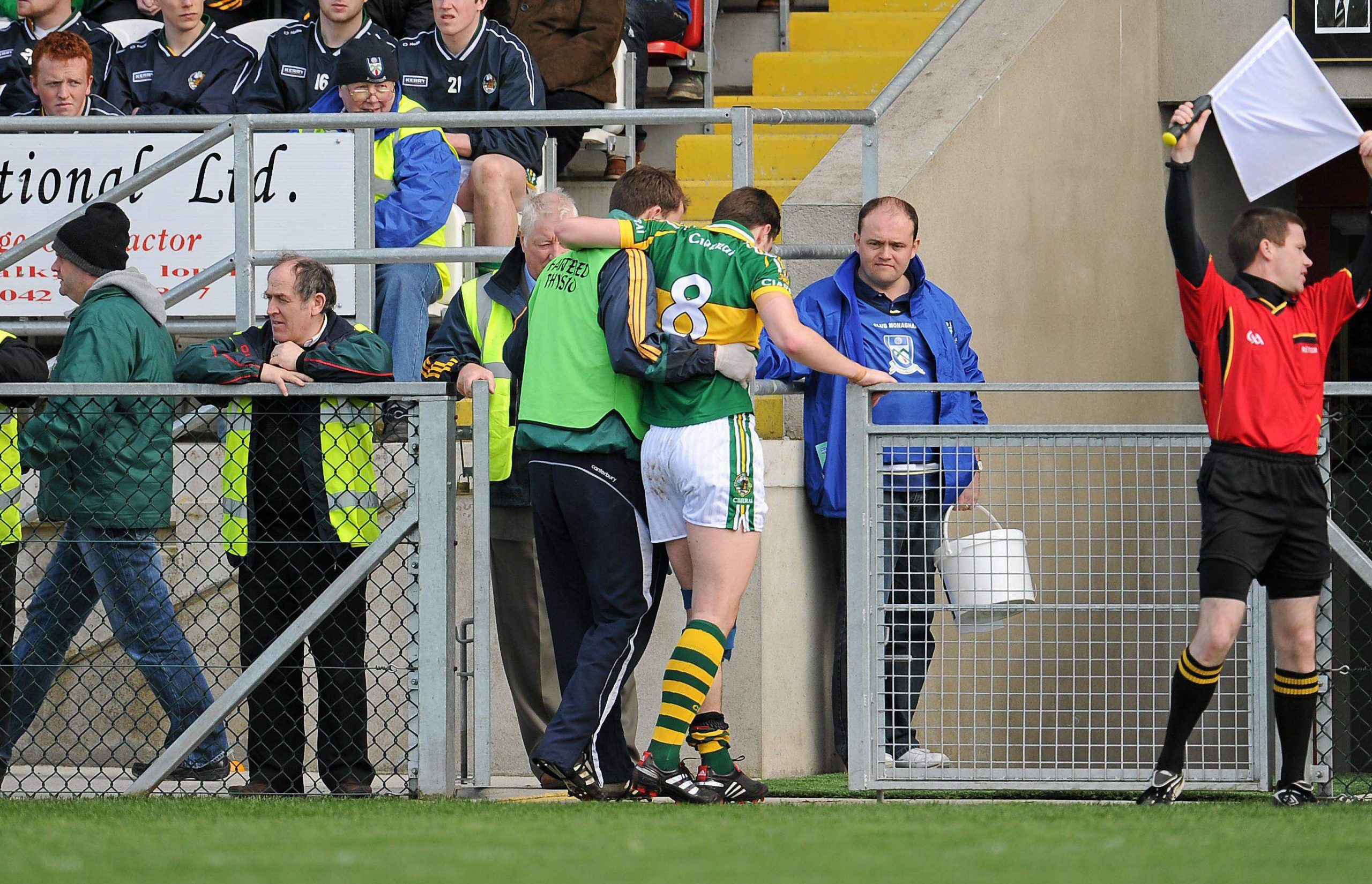UNFORTUNATELY, as someone who works in sport psychology and who is also a doctor, I spend a lot of my time dealing with the fall out of ACL injury.
Every season, some high profile players fall foul of this curse. Mayo’s Paddy Durcan, Armagh’s Aimee Mackin and Galway’s Aoife Molloy are just three exceptional players who won’t be seen wearing their county jersey for a long time.
We all know someone who’s done their cruciate. Perhaps it has happened to yourself, but we still know very little about it as an injury.
It’s always good to know what a body part actually does. Many players and managers don’t even understand what the ACL actually is and what it does.
ACL stands for anterior cruciate ligament. Very simply, it stops your lower leg bone from jutting forward, and your thigh bone from going backwards. It gives stability to the knee, and interestingly, it also sends sensory information to the brain.
This ensures movements are coordinated, and it maintains postural control and stability. It may also somewhat explain why the recovery takes so long. How often have we seen a player who’s had surgery, appears to be ‘fixed’ but still isn’t near their old selves? Part of that is due to deconditioning for sure, but it may also be that we don’t fully appreciate how to rehab our sensory pathways to the brain.
A lot of work is being done to understand why the ACL gets damaged. I’m on the Medical, Scientific and Welfare Committee in Croke Park and it’s an issue that constantly lands on the agenda.
One of our members is Mayo physiotherapist Liam Moffatt, who is continually doing what he can to track data and mechanisms of injury in an effort to decrease the incidence of this devastating injury. Very, very simply, due to the ACL’s position and design, it can be ruptured in many ways, usually related to activities that involve sudden changes in direction, stops or impacts.
Research conducted in 2017 via the injury database concluded that less than two per cent of intercounty injuries were ACL ruptures, and that they happen more in games than training. This is just the men. Jump forward to 2023 and 50 per cent of the injury fund claims made to the LGFA were ACL related.
By the early noughties, our Premier League brethren across the water had recognised that we need to actually assess movement patterns, as some of us move in a way that doesn’t help our chances. We have a long way to go yet in formulating appropriate S&C and training to strengthen and protect this ligament.
If you’re lucky, you’re back attempting to train within ten months of injury. And that’s when the mind kicks in. The potential psychological effects need to be recognised on time, otherwise return to play and success rates start to decline. In fact, after the surgery to repair the ligament, the psychological impact is one of the main factors contributing to their return, or non-return.
Players often really struggle with fear of reinjury, mood changes, and changes in neural pathways. This can make them more guarded as players – physically on the field and less connected with their teammates. It also increases their risk of another injury. While they’re rehabbing, their support system needs to be conscious of the fact that they’ve lost their regular endorphin hit as they can’t train. All of a sudden, their 2-4 times a week hit of exercise with friends is gone. That can precipitate a spiral into mental health difficulty if not monitored. Some even struggle with post-traumatic stress disorder.
An effective way to counter this is ensuring people have high optimism levels – they are more likely to adhere with treatment and rehab plans, and will have better coping strategies. Interesting data has also emerged from the US, where athletes with higher fear levels after injury reported weaker thigh muscles on the affected leg.
ACL recovery doesn’t start and end with the scalpel. We need to educate ourselves about how and why it happens.
We need to bring this knowledge to our training fields. We need to accept that an injured player needs both physical and mental support to deal with the isolation, fear of pain and loss of motivation.
Finally, this is a long term health issue. An ACL tear increases your risk of doing another one. Later in life, conditions like osteoarthritis can set in. if you stop playing sport, you’ll lose all the health and social benefits associated with it. We all need to do our bit.
Receive quality journalism wherever you are, on any device. Keep up to date from the comfort of your own home with a digital subscription.
Any time | Any place | Anywhere












